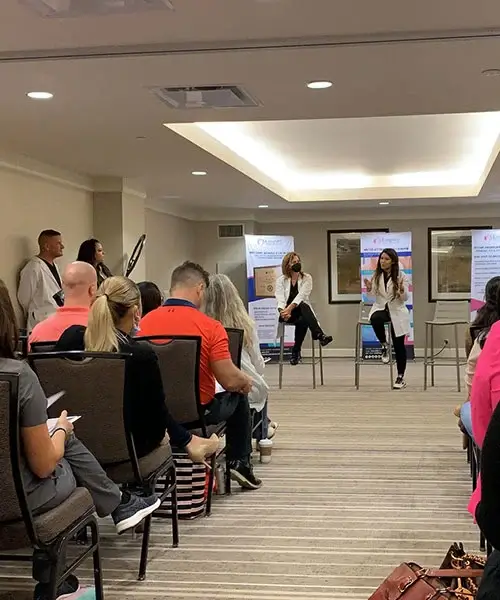Finding Balance: Restoring a Natural Look After Too Much Botox®
By Dr. Stephen Cosentino
PRESIDENT OF EMPIRE MEDICAL TRAINING
Botox® injections are the single most popular minimally invasive cosmetic treatment in the United States. They’re used for a wide variety of cosmetic complaints.
Like all medications, Botox does have documented side effects. While serious Botox complications are relatively rare, some patients (often due to provider error) experience the telltale signs of too much Botox in the face.
This isn’t cause for panic. The effects of too much Botox are usually temporary — but on the order of months, rather than days or weeks. If you’d like to fix the issue sooner, here’s what you can do about it.
The Telltale Signs of Too Much Botox
Adverse events after receiving too much Botox can include:
- Brow asymmetry: This can manifest as a drooping or persistently arched brow. The latter is known as “Spock brow,” after the Star Trek character.
- Droopy upper eyelid (ptosis): Caused by injection too close to the eyelid muscle, drooping eyelid is known as ptosis.
- Eyelid asymmetry: When ptosis affects only one eye, an asymmetry results.
- Lower eyelid turning (ectropion): This condition occurs when the lower eyelid drops and turns outward, resulting in an annoying (though usually not painful) and noticeable display.
- Double vision (diplopia): This reaction occurs when Botox relaxes or paralyzes the muscles responsible for focusing the eyes.
- Frozen smile: This is typically associated with injections around the mouth. It can take different forms, but often shows as a “dropped” upper lip or difficulty moving the lower lip.
- Droopy mouth: This complication occurs when one side of the mouth droops, resulting in a persistent asymmetry and difficulty forming certain facial expressions and movements. It can cause what’s popularly known as “frozen face.”
- Skin lumps: Skin lumpiness usually occurs after Botox due to the body’s natural response to the injection. Less often, it’s caused by infection or allergic reaction, which are more serious issues.
One misconception about Botox is that excessive dosing can cause long-lasting granulomas, or small lumps under the skin. While Botox can cause temporary lumps due mainly to primary injection reaction, granulomas are more likely to be a sign of too much filler. Because some patients receive Botox treatment and filler injections at the same time, the origin isn’t always obvious.
What to Do If You Had Too Much Botox
Unfortunately, there’s no antidote for locally injected Botox or other botulinum toxin injections. However, experts recommend doing the following if you suspect you’ve had too much Botox:
- Wait two weeks: Botox takes up to 14 days to take full effect. What seems like a botched job during the first week could look great by week 3.
- Schedule a touch-up: More Botox usually doesn’t solve problems caused by over-injection, but strategic touch-ups near the original treatment area may help balance out the unwanted results.
- Apply makeup strategically: Use mascara, eyeliner, and/or eye shadow to obscure unwanted side effects around the eyes.
- Try copper peptides: There’s some evidence that copper peptide treatments can counteract Botox’s effects, but your results may vary.
- Avoid zinc-based treatments: Zinc is thought to compound the effects of Botox, so avoid any topical treatments that contain it (including sunscreens that list zinc as an ingredient).
Try a different injection next time: Shorter-acting neuromodulator treatments will be widely available soon. Because they clear the body faster, getting too much won’t be as big of a deal for as long.


